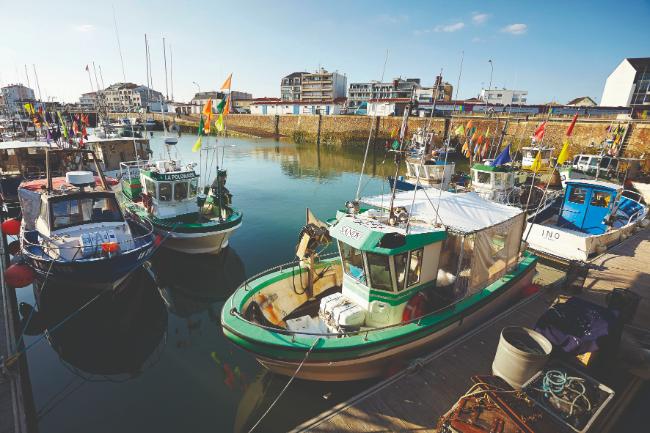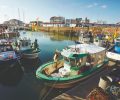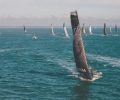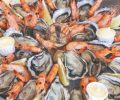Experience Vendée
Sponsored
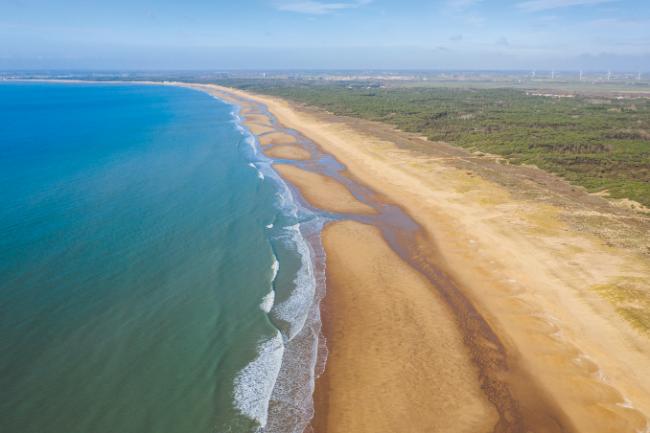
With its glorious coastline, magical islands and lush marshlands, the Vendée is ripe for exploring.
They call it the Côte de Laimière and with an average of 2,500 hours of sunshine every year, you can understand why. The lovely Vendée department, which sits halfway up France’s western coast, boasts 250km of coastline, brimming with 140km of sandy beaches, plus endless dunes and pine forests and two of western France’s most intriguing islands – Île de Noirmoutier and Île d’Yeu.
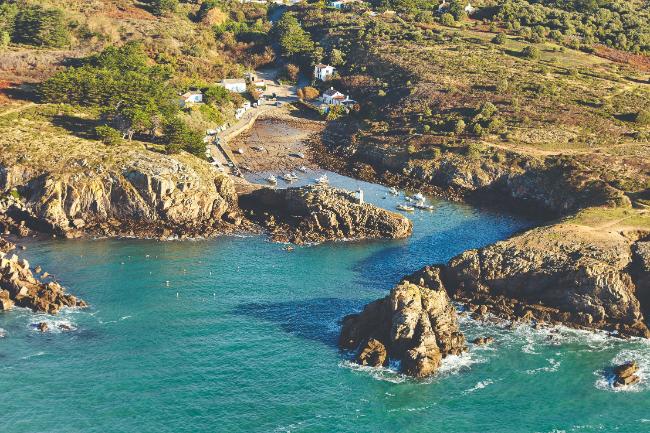
© A.Lamoureux – Vendée Expansion
THE COAST
There are no less than 18 seaside resorts dotted along the shoreline, offering all levels of accommodation from rugged beach camping up to four-star hotels and just about every water sport you care to think of. Les Sables-d’Olonne is the largest of these resorts and probably the best known. Every four years this delightful town becomes the epicentre of global sailing as all the most competent – and adventurous – single-handed sailors set off on the Vendée Globe, a non-stop, solo, round-the-world race which is, most experts agree, the toughest sailing competition of all.
To the south of Les Sables-d’Olonne is the town of Talmont-Saint- Hilaire, with its oyster port. Close to here you can go kayaking or canoeing on the Payré estuary, or hunt for fossilised dinosaur footprints at low tide. Further south is La Tranche-sur-Mer, a family-friendly resort with long, sandy beaches, surf breaks, a nature reserve and plenty of kids’ activities, including an amusement park, a swimming pool complex, karting, horse riding and – on a lake close to town – beginners’ sailing lessons. The town is known locally as ‘La Petite Californie’ and when it buzzes with activity in the warmer months, you see why.
North of Les Sables-d’Olonne is just as inspiring. You shouldn’t miss the coastal conurbation of Saint-Gilles-Croix-de-Vie. A town of two halves, it straddles La Vie, the river flowing from the saltwater marshes of the Marais to the Atlantic. On the right bank is the fishing village, Croix-de-Vie, while on the left is the old town of Saint-Gilles- sur-Vie, with its cobbled lanes and tourist-friendly shops.
The local hero in this part of the Vendée is the humble sardine. To get an idea of just how important this little fish is, follow the Chemin de la Sardine, a walking trail that allows you to explore the region’s fishing heritage. Be sure to pay a visit to the Atelier de la Sardine, with its museum and art gallery and the Port de Pêche, from where the town’s fishing fleet sets sail daily. There are plenty of great restaurants with sardines featuring prominently on the menu. In spring the town stages a festival dedicated to this fish called Le Printemps de la Sardine (2024 dates to be confirmed).
A few kilometres north of Saint-Gilles you will find another wonderful seaside resort – the very pretty market town of Saint-Jean-de-Monts. Here, between the town and the sea, are three distinct landscapes. First is the pine forest, with its network of hiking and biking paths, running parallel to the coast with its great selection of campsites. Then come the dunes, where you might see horse-riders roaming around. Finally, there’s the beach – the longest single stretch of sand in the Vendée, from the Plage de la Grande Côte in the north to the Plage des Demoiselles in the south.
THE ISLANDS
Further north up the coast, you eventually reach the Île de Noirmoutier. There are two ways to access the island: most choose the D38 road bridge across the strait, while the more adventurous tackle the Passage du Gois, a spectacular 4.5km-long causeway across the bay that only reveals itself at low tide. Keep an eye on the incoming sea if you don’t want to get washed into the Atlantic.
Once on the island, admire the fig trees and early-flowering mimosa, evidence of the mild microclimate here. Tourism is the main economic driver, but you’ll also find salt production, tasty Bonnotte potatoes and an abundance of seafood. At the Marais de la Bonne Pogne and the Marais Mounet, you can see salt producers in action.
The main island village, Noirmoutier-en-l’Île, offers the best dining. Top of them all is La Marine, where Alexandre and Céline Couillon, who won their third Michelin star in 2023, ply their trade. One of their signature dishes is the Erika oyster, marinated in squid ink and sprinkled with Italian bacon. Rather bizarrely, it’s designed to remind diners of the disastrous oil spill from the tanker MV Erika that took its toll on this section of France’s coastline back in 1999.
The Vendée’s other major island, Île d’Yeu, is reached by boat from Fromentine on the mainland. After a 17km crossing, you can then explore on foot or on a hired bicycle.
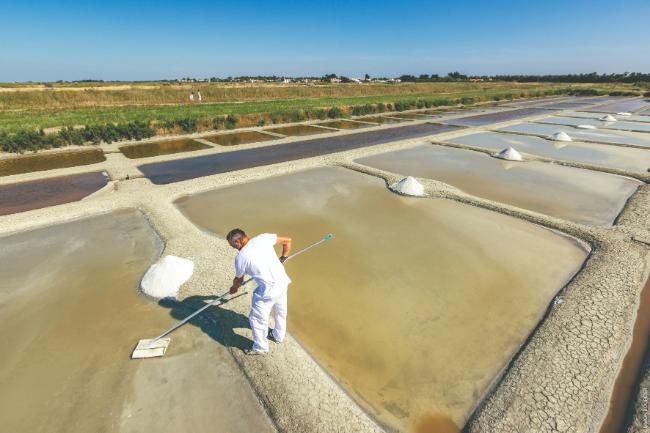
MaraisSalant_Epine-Noirmoutier, © S.Bourcier – Vendée Expansion
THE INTERIOR
As you’d expect with a maritime department, much of the gravity leads visitors towards the coast. But there are plenty of inland sights to lure you in. For sheer drama and excitement, head for what is considered one of the greatest theme parks in all of France. You don’t come here for the rollercoasters, as you do at Disneyland Paris and the like, but for the astonishing historical re-enactments that are so realistic you will be left gasping in disbelief.
Puy du Fou is the Vendée’s top tourist attraction and currently France’s second most-visited theme park, welcoming more than 2.5m visitors annually. It brilliantly brings history to life by imbuing it with live-action adrenaline. There are 20 shows in all – many with enormous sets, actors and stunt-people
all set out across a 500-acre estate near Les Epesses. One of the most impressive and bloodiest is Le Signe de Triomphe, which sees gladiator battles and chariot races in a vast Roman coliseum. Oodles of stage blood spatter the sand and there are even real lions. Elsewhere, medieval knights try to put each other to the sword, Vikings pillage villages and musketeers swashbuckle away. The newest show is Le Mime et l’Étoile, celebrating the Belle Époque period of the early 20th century and the beginnings of cinema.
“With their fast-paced action and spectacular special effects, our shows are designed to be like live movies,” the park organisers explain. “Emotional impact is always central to the Puy du Fou concept. Whether the audience bursts out laughing, jumps out of their skin in fright, or has tears running down their cheeks, every emotion is present.”
A theme park this good is naturally very popular, especially in summer, so be prepared to queue. With military planning you could tick it all off in one day-just about but you’ll be rushing between shows. Much better to plan for a more relaxing experience and stretch your visit to two days by staying at one of the six themed hotels. Puy du Fou is open from April until early November (www.puydufou.com).
South of here, stretching for 970km² – much of it within the southern section of the Vendée – is the Parc naturel régional du Marais Poitevin. This vast maze of streams, green pools, hidden marshes and ruined churches is nicknamed ‘La Venise Verte’. Created when Dutch engineers built canals through the existing marsh in the 17th century, its hundreds of kilometres of waterways are best explored in the traditional flat-bottomed marsh boats, which you can hire at various piers (embarcadères) across the region.
Another fun way to enjoy the scenery is to jump aboard the steam train that runs from Mortagne-sur-Sèvre to Les Herbiers. Called the Chemin de Fer de la Vendée, it’s a short 22km journey, but as you trundle over viaducts, you cross the Sèvre Valley and skirt the edge of the Collines Vendéennes. Dine in the restaurant car or, if you’re a train enthusiast, join the driver and learn how to operate the train. (www.vendeetrain.fr)
The countryside of the Vendée is dotted with dozens of achingly pretty towns and villages and for first-time visitors, it’s tricky to know which ones to visit. A selection of the most interesting falls under the label of an association called Petites Cités de Caractère, honouring those with notable architectural and landscape heritage. Among these are Mortagne-sur-Sèvre, Mallièvre, Mauléon, Mouchamps and Pouzauges in the north, and Vouvant, Foussais-Payré and Rives-d’Autise further south.
There are also plenty of châteaux to visit, some offering restaurants and overnight accommodation. Among the more impressive are Château de la Flocellière (in Sèvremont), Château de Terre Neuve (in Fontenay-le-Comte), Château de la Barbinière (in Saint-Laurent-sur-Sèvre) and Château de Tiffauges, in the town of the same name. It was at the latter that the notorious 15th-century mass-murderer Gilles de Rais or Bluebeard, as he became known once lived. Now that’s a ghost you wouldn’t want to bump into on a dark night.
From France Today Magazine
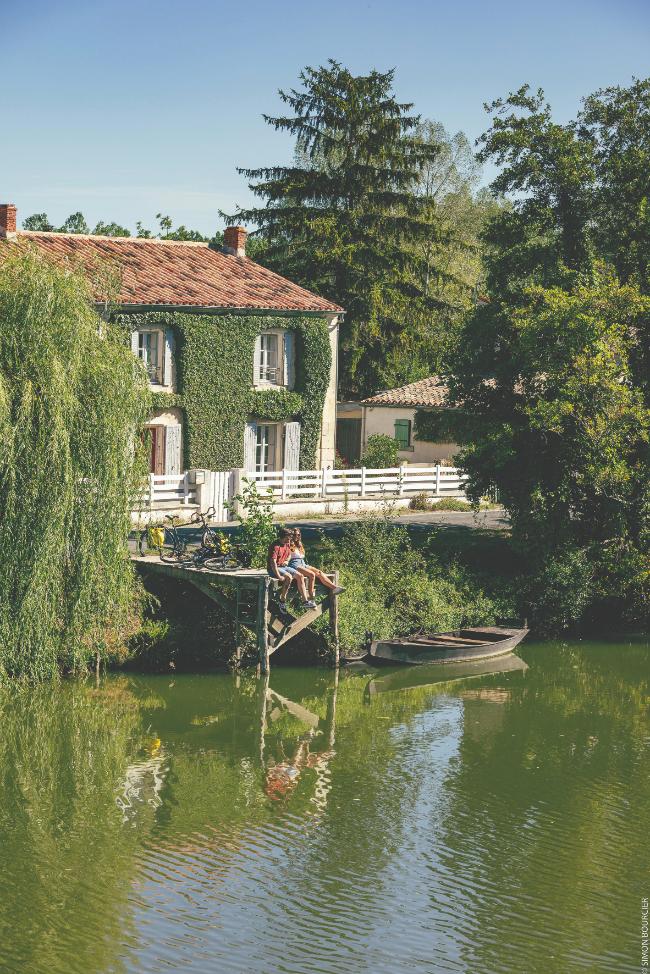
Itinérance Vélo – Le Mazeau, © S.Bourcier – Vendée Expansion
VENDÉE ESSENTIALS
GETTING THERE
BY CAR/FERRY
The A87 and A83 autoroutes cross the region. The nearest ferry port with links to the Vendée is Saint-Malo.
BY AIR
Nantes-Atlantique airport www.nantes. aeroport.fr serves London Gatwick, Birmingham and Bristol (with easyjet) and Edinburgh, London Stansted and Manchester (with Ryanair). La Rochelle-lle de Ré airport serves Bristol, London Gatwick and Manchester (with easyJet) and London Stansted (with Ryanair).
BY TRAIN
TGV trains run directly from Paris to La Roche-sur-Yon and Les Sables-d’Olonne.
TOURIST INFO
MAIN TOURIST OFFICE FOR THE VENDÉE
REGIONAL TOURIST OFFICES WITHIN THE VENDÉE
Vendée Grand Sud
www.fontenay-vendee-tourisme.com
Les Sables-d’Olonne
www.lessablesdolonne-tourisme.com
Saint-Gilles-Croix-de-Vie
www.payssaintgilles-tourisme.fr
Saint-Jean-de-Monts
La Tranche-sur-Mer
www.latranchesurmer-tourisme.fr
Puy du Fou
Lead photo credit : © A. LAMOUREUX, S. BOURCIER | VENDÉ E EXPANSION
Share to: Facebook Twitter LinkedIn Email
More in coastal towns, seaside, Vendée, west coast, western France
Leave a reply
Your email address will not be published. Required fields are marked *

